
— Sam Charlwood
The humble runabout used to be a rite of passage for motorists in Australia. Most of us have either owned one or spent extended time in one.
But with the advent of more exacting safety standards, a push for electrification, and greater equipment expectations from consumers, the modern-day equivalent isn’t as obvious.
Hyundai reckons it may have landed on a potential solution, and it so happens to be electric.
The new Hyundai Inster is touted as part runabout and part SUV, combining nippy around-town dynamics, a quirky design and a fun, cheerful ethos that has defined generations of cheap city cars.
But there is a major consideration that flies in the face of that thinking. Keep reading for more.
Here’s the thing. The Hyundai Inster range opens at $39,000 plus on-road costs in Australia.
There are three grades available: the base Standard Range ($39,000 plus ORCs), the mid-level Extended Range fitted with a larger battery ($42,500 plus ORCs), and the flagship Inster Cross ($45,000 plus ORCs).
None of those prices is really in keeping with the Inster’s runabout positioning. In fact, the base model is almost double the price of a similarly sized Hyundai Venue (from $22,000 plus ORCs), the Korean marque’s most logical petrol equivalent.
In Korea, Hyundai also offers the Casper SUV, effectively a petrol-powered version of the Inster. There are no plans to bring that vehicle to Australia, say officials.
There are also more affordable Chinese equivalents, such as the BYD Dolphin (from $29,990 plus ORCs), GWM Ora (from $35,990 plus ORCs) and the MG4 (from $37,990 plus ORCs).
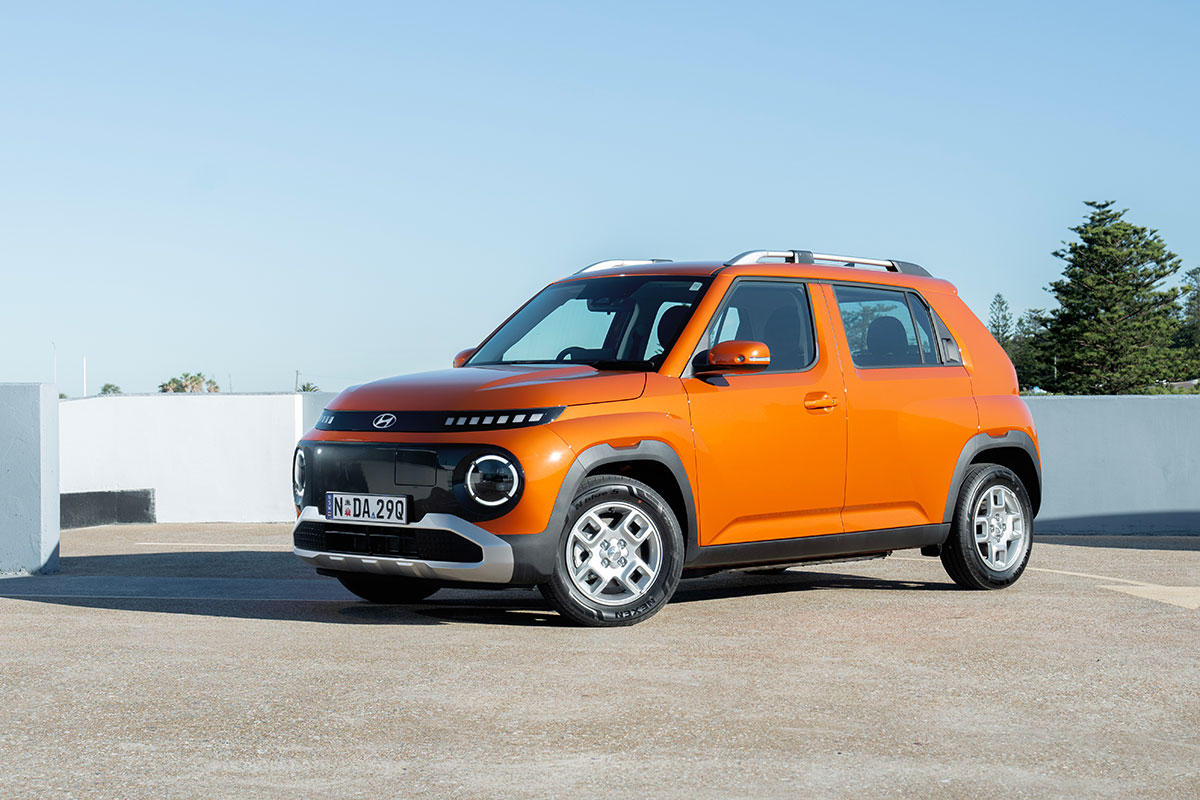

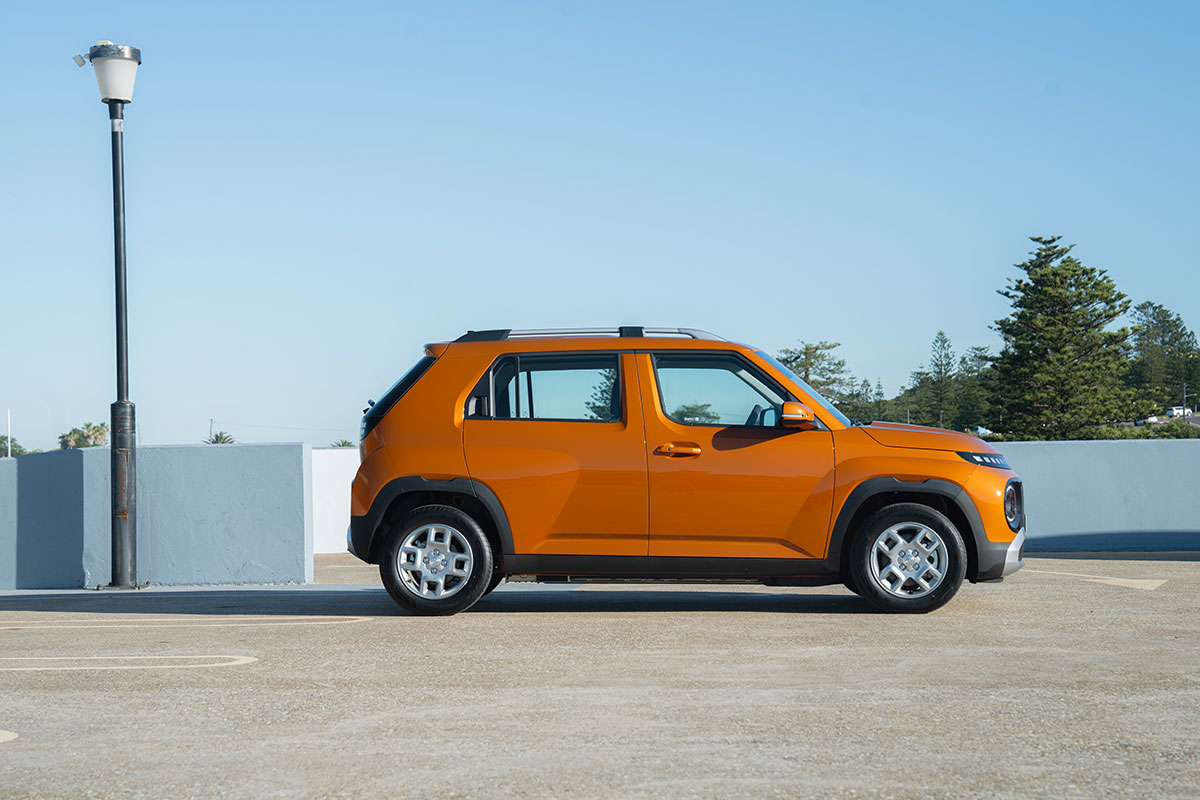
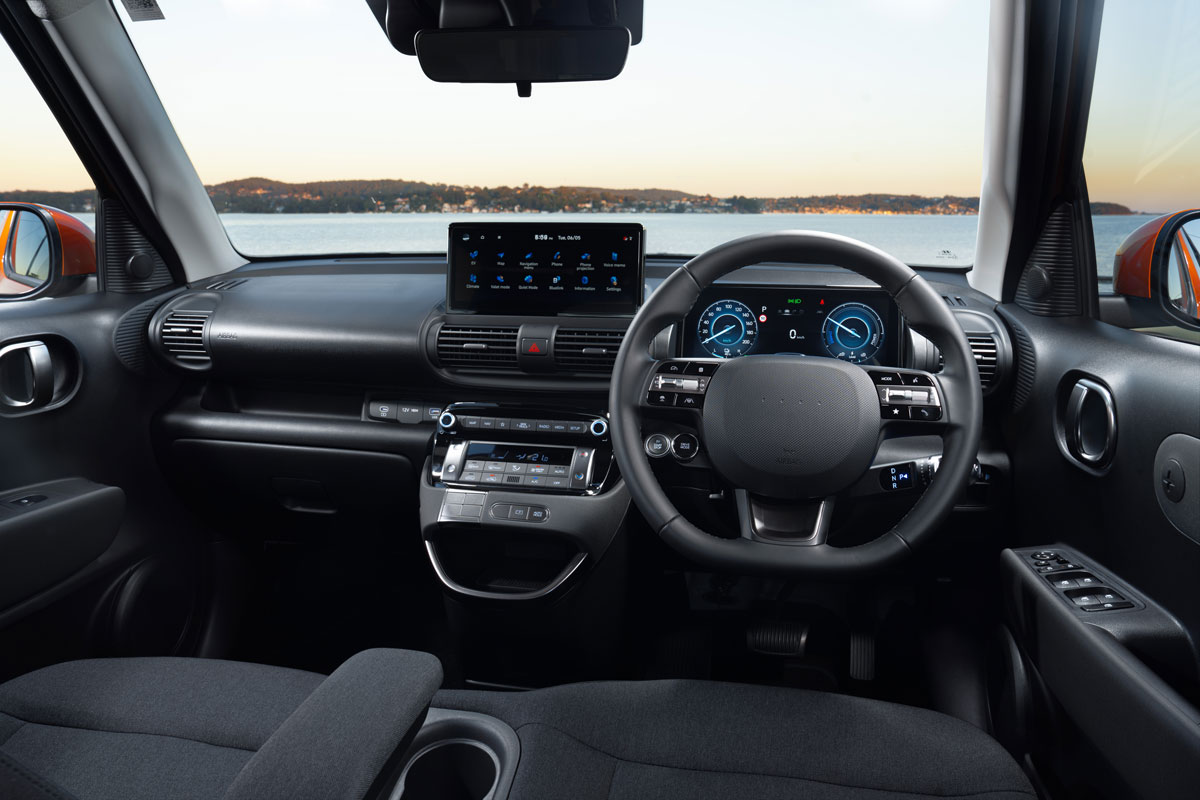
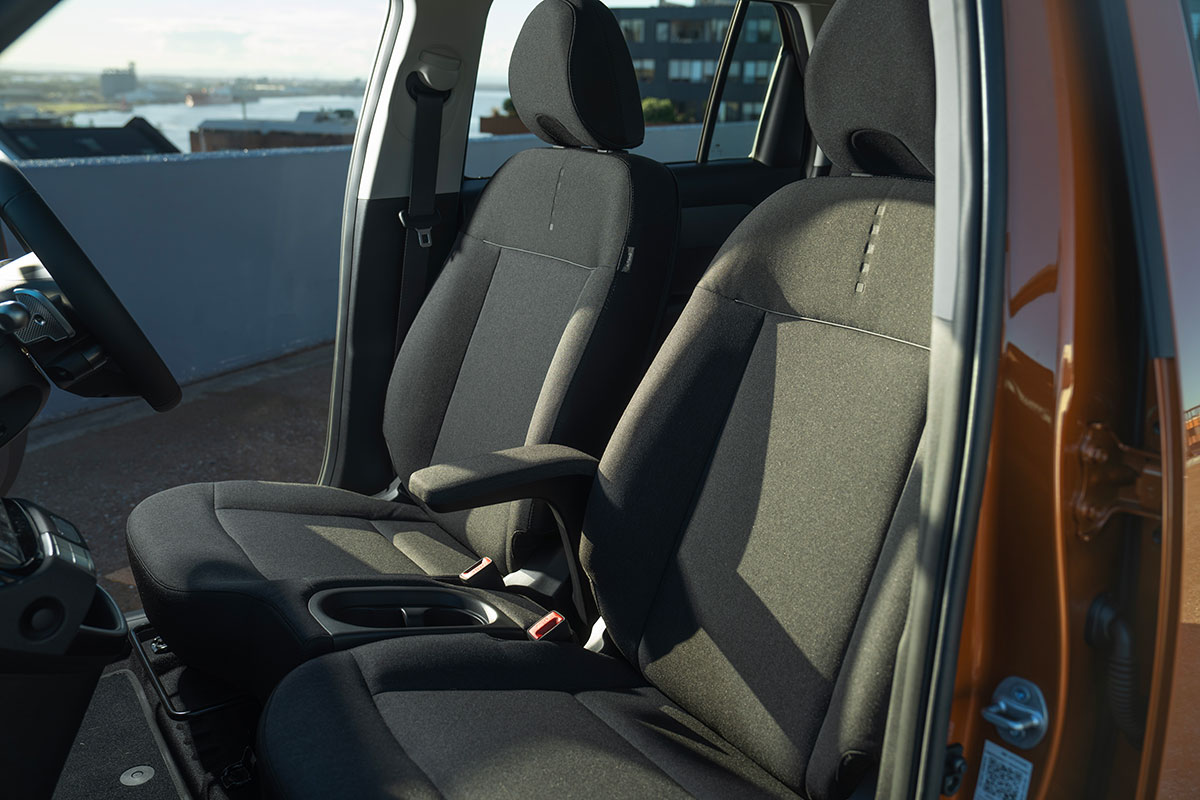

Where the Hyundai Inster truly distinguishes itself from rivals is in its design and inherent character.
The interior belies the Inster’s 3.8-metre dimensions, with considered proportions in the first and second rows, and a flat floor space. It’s almost as if Ikea’s designers were let loose on the interior layout: the space is hugely practical, resoundingly airy, and replete with cool surface treatments and storage. You can even stow the front seats completely flat to accommodate a mattress or surfboards (though, unfortunately, this feature is only on the flagship Cross variant).
This ample space is partly on account of the vehicle’s 2580mm wheelbase, which liberates leg room – particularly in the second row. Across the first and second rows, there’s decent incidental storage, too, with cool open cubbies and hidey holes for odds and ends.
The caveat here is the Inster is strictly a four-seat affair, fit with a 2+2 layout. The 280-litre boot is nothing to write home about, either – big enough for overnight bags but not a lot more. Again, though, the Inster’s clever design is the clincher: the rear seats offer fore-aft sliding adjustment, thereby increasing boot dimensions considerably.
Furthermore, there’s a storage area underneath the boot for charging cables. However, the Inster’s front-drive architecture precludes it from offering frunk storage up front.
There’s a durable premise to the car, its contact points adorned in harder plastics that perhaps aren’t as comfortable on longer journeys. There are no such complaints around the base cloth seats, which are adequately padded and offer decent support.
Where the Inster really surprises is in its technology and safety. Dual 10.25-inch displays – one a centre touchscreen unit and the other a digital instrument cluster for key driving information – offer clear, concise and to-the-minute updates on what’s happening.
The spread of physical buttons and switchgear in the centre fascia is a welcome change from the screen-centric layouts in many rivals. It means simple commands are dealt with at the singular press of a button, rather than rummaging through screen sub-menus.
Even the entry Hyundai Inster comes pretty well loaded: 15-inch alloy wheels, keyless entry and start, LED headlights and LED daytime running lights, LED tail lights, rain-sensing wipers, cloth seats and single-zone climate control.
Infotainment comprises dual 10.25-inch displays, Apple CarPlay, Android Auto, Bluetooth connectivity and wireless phone charging. There are also Bluelink Connected Services, which offer the ability to check the vehicle’s charge status, lock and unlock remotely, plus much more.
Vehicle-to-load charging capability is also assured with separate connections inside and outside the vehicle, rated at a maximum 3.6kW (250 volts).
The Inster is backed by a five-year/unlimited kilometre warranty, while its battery gets a separate eight-year/160,000km warranty.
Servicing is based on 24 month/30,000km intervals. Hyundai says each service will cost $665.
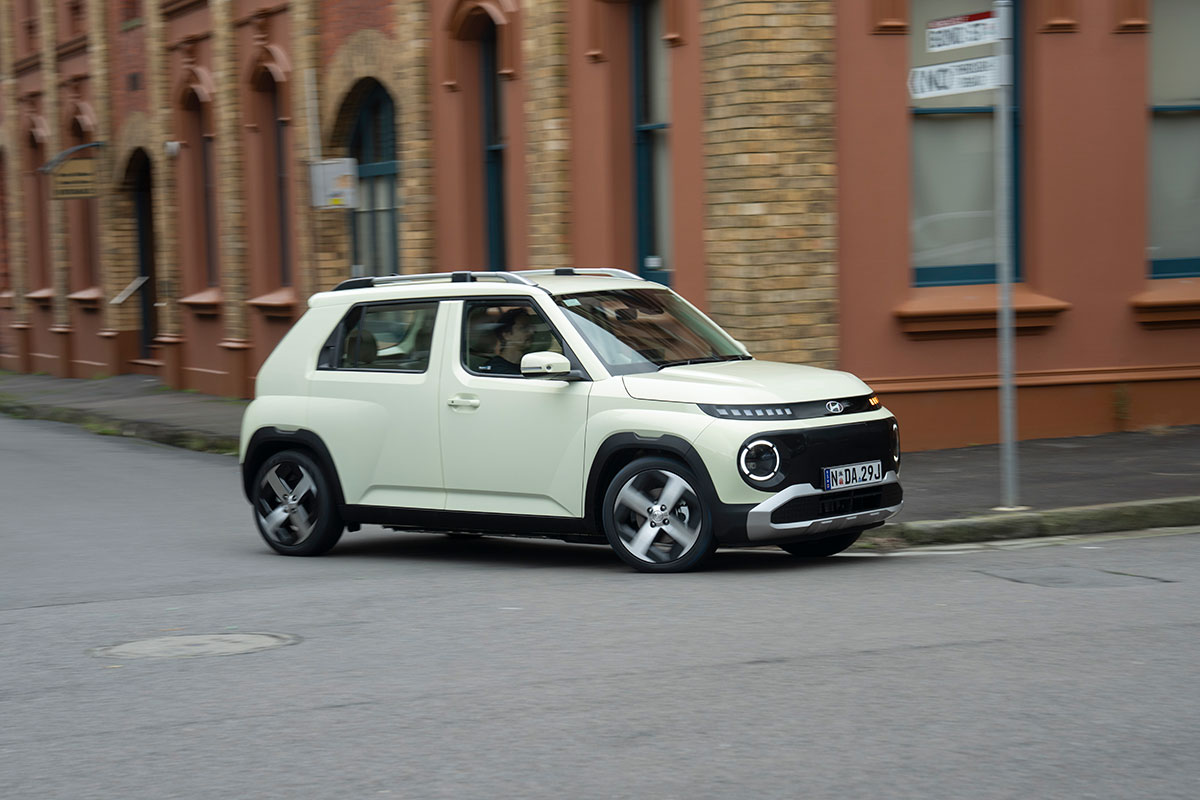

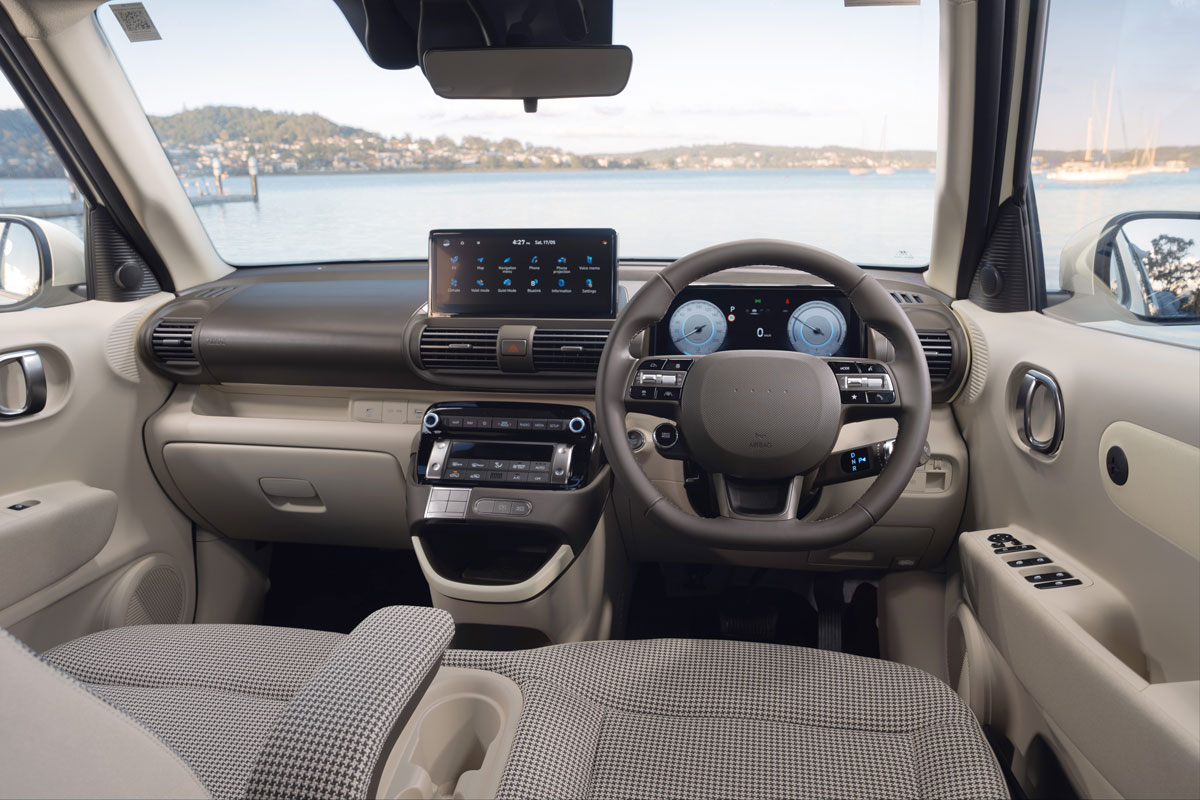
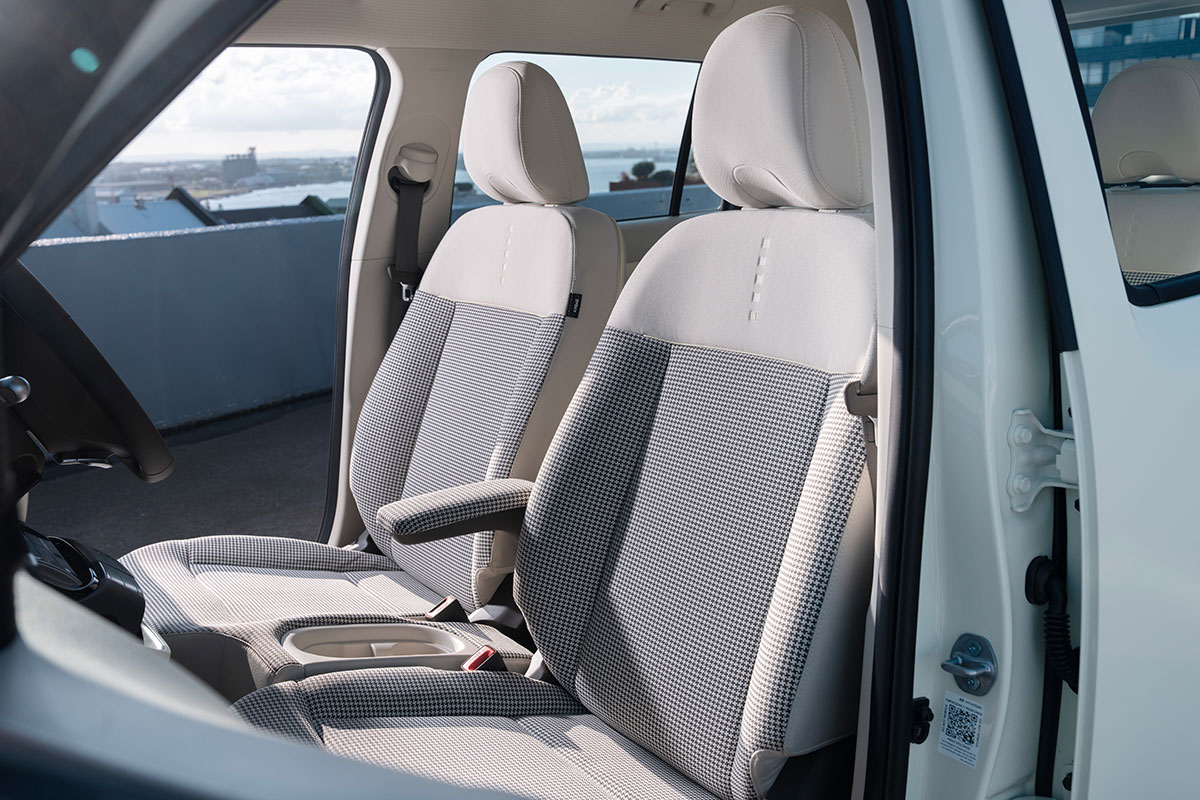
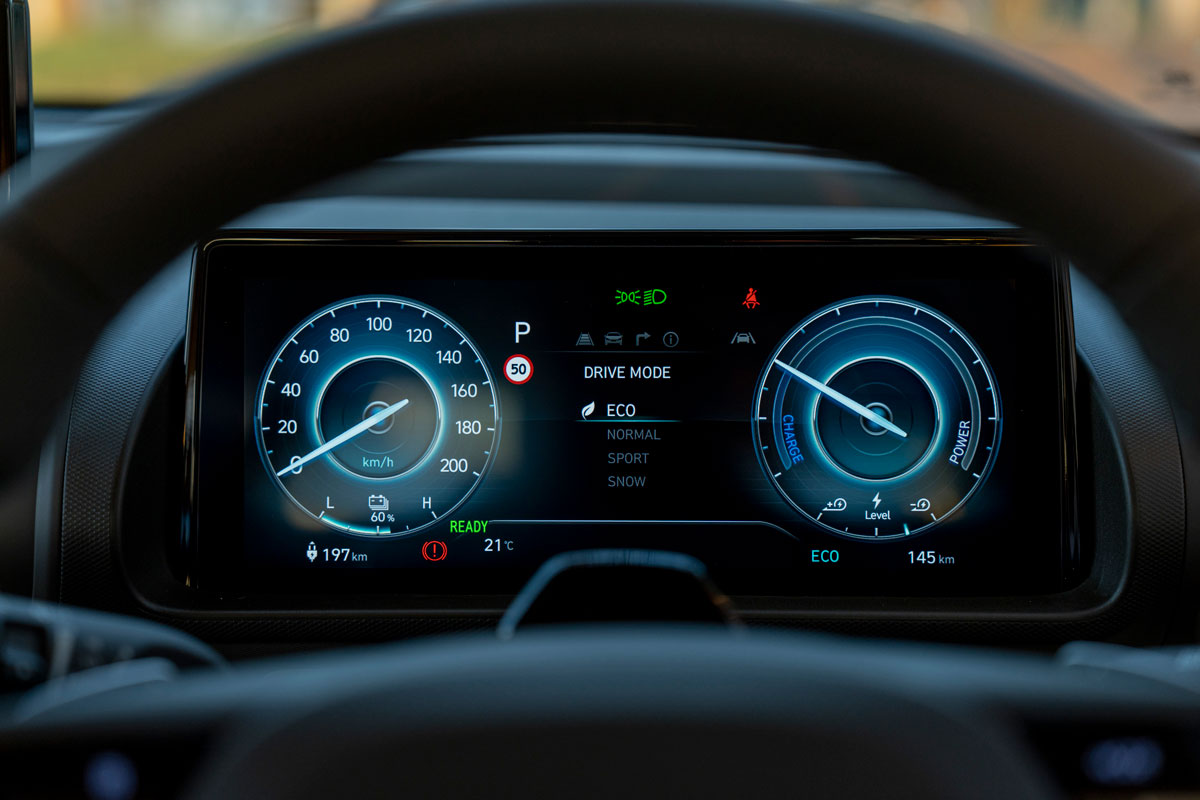
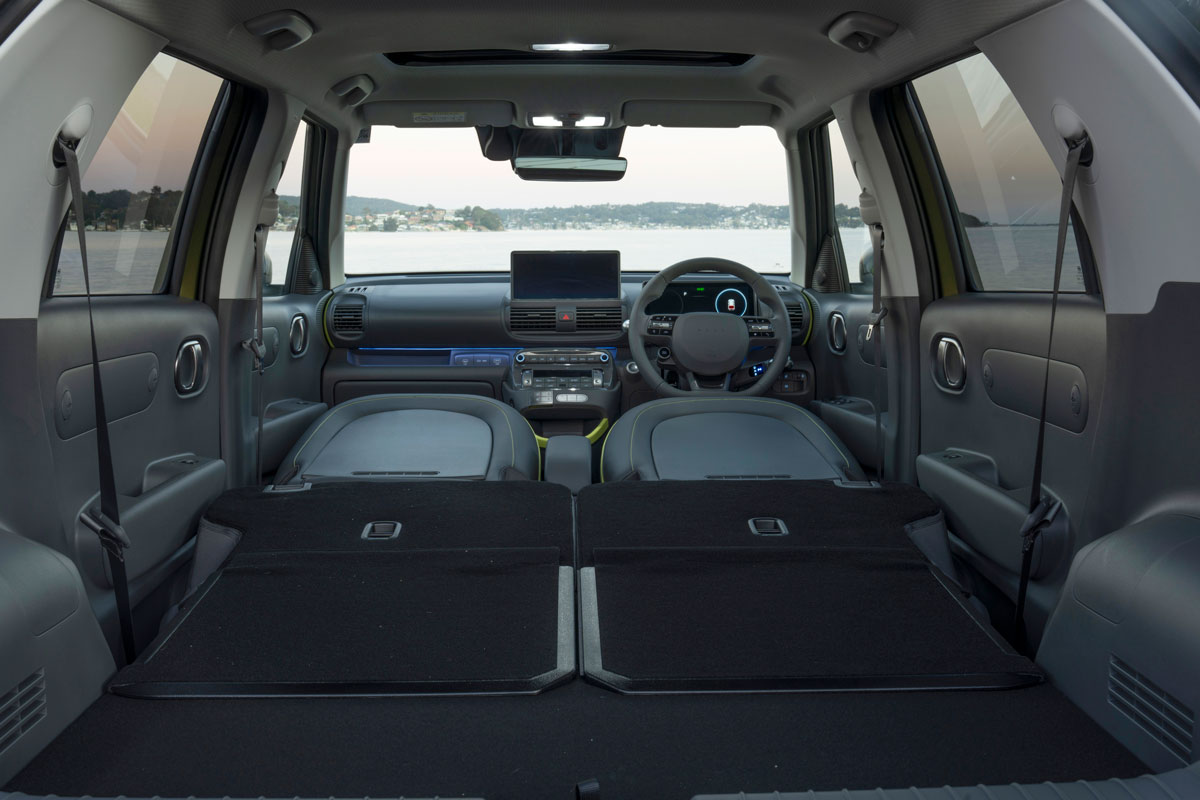
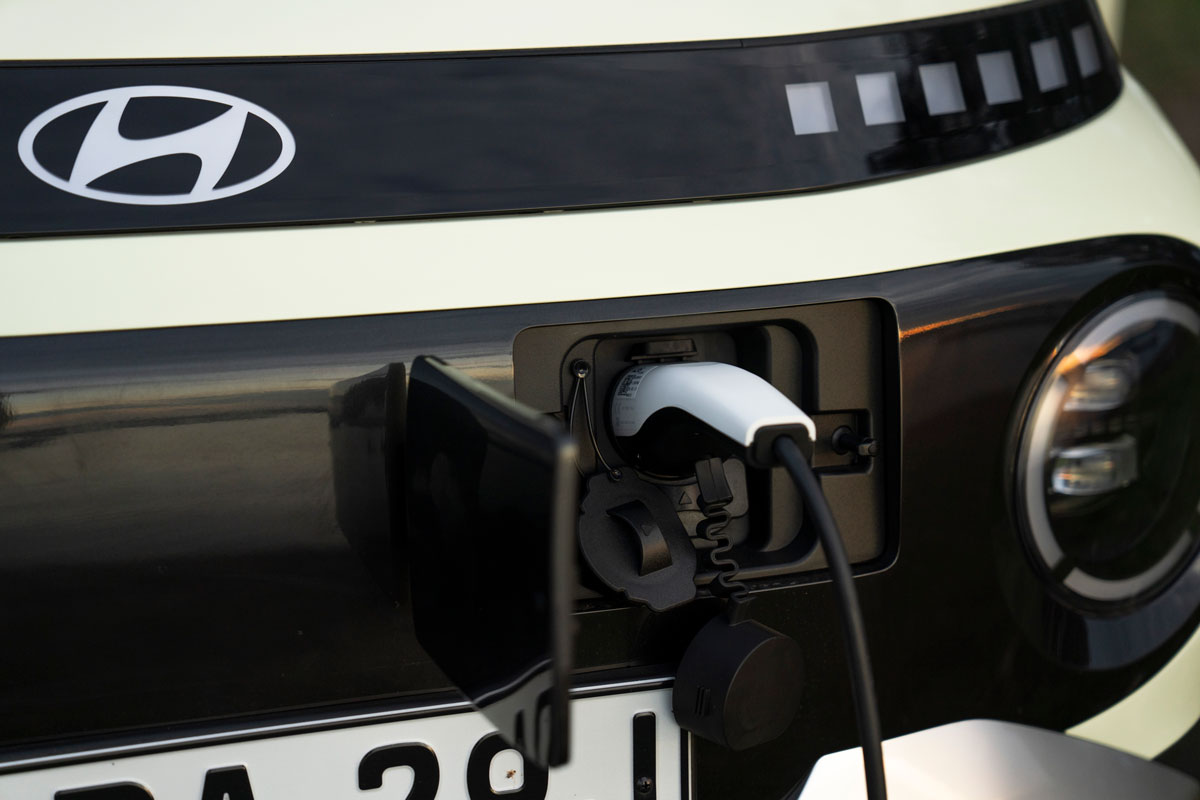
The Inster is yet to be crash-rated, but Hyundai says it will supply a car to ANCAP if requested.
In any case, the safety story is a strong one. Each model gets seven airbags including front side centre airbag, Smartsense technology including blind spot monitoring, driver attention warning, forward collision avoidance assistance, highway driving assistance, automatic high beam, speed limit assistance, in-cabin camera, lane keeping assistance, rear cross-traffic alert and a surround view monitor.
That said, some of the safety systems are onerous in their operation, particularly the driver attention alert and speed limit warning, which constantly chimed erroneously across our three-hour drive at the national launch. You can turn them off, but you’ll need to do so each time you restart the car.
The base Hyundai Inster sources power from a front-mounted 42kWh battery that drives the front wheels. It offers 71kW/147Nm outputs, together with a claimed WLTP-verified range of 327km and a claimed efficiency average of 14.3kWh/100km.
Buyers stepping up to the mid-level Extended Range get a larger 49kWh battery with greater 84kW/147Nm outputs, together with a WLTP range of 360km. The additional weight of the drivetrain means average energy consumption increases to 15.1kWh claimed.
According to Hyundai, the Standard Range battery can be replenished from 10 to 80 per cent in four hours using a 10.5kW AC connection, or roughly 18 hours using a (10 to 100 per cent) using a regular household connection.
A maximum DC charging rate of 120kW enables a claimed charging time of 30 minutes from 10 to 80 per cent if you’re using public infrastructure.
All Inster variants are underpinned by MacPherson strut front suspension and a torsion beam rear, together with disc brakes at all four corners.
Unsurprisingly, towing is not an option with the Inster in Australia.
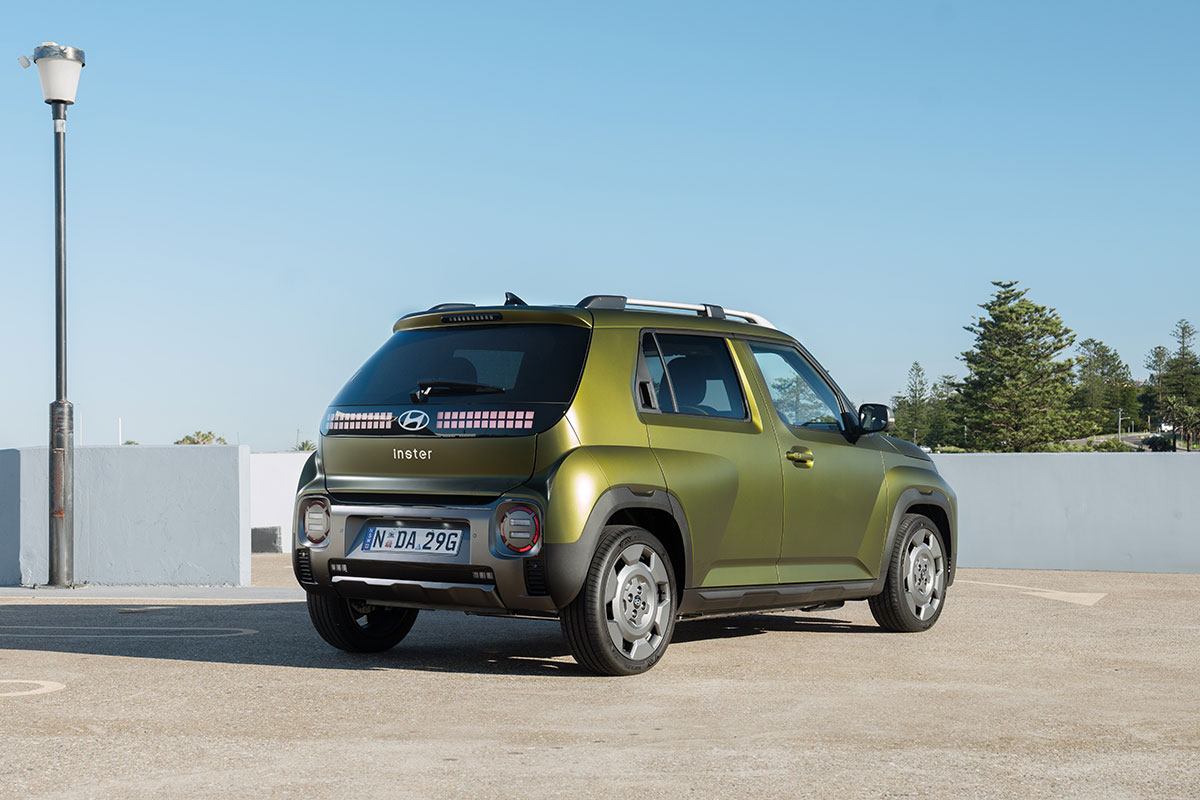
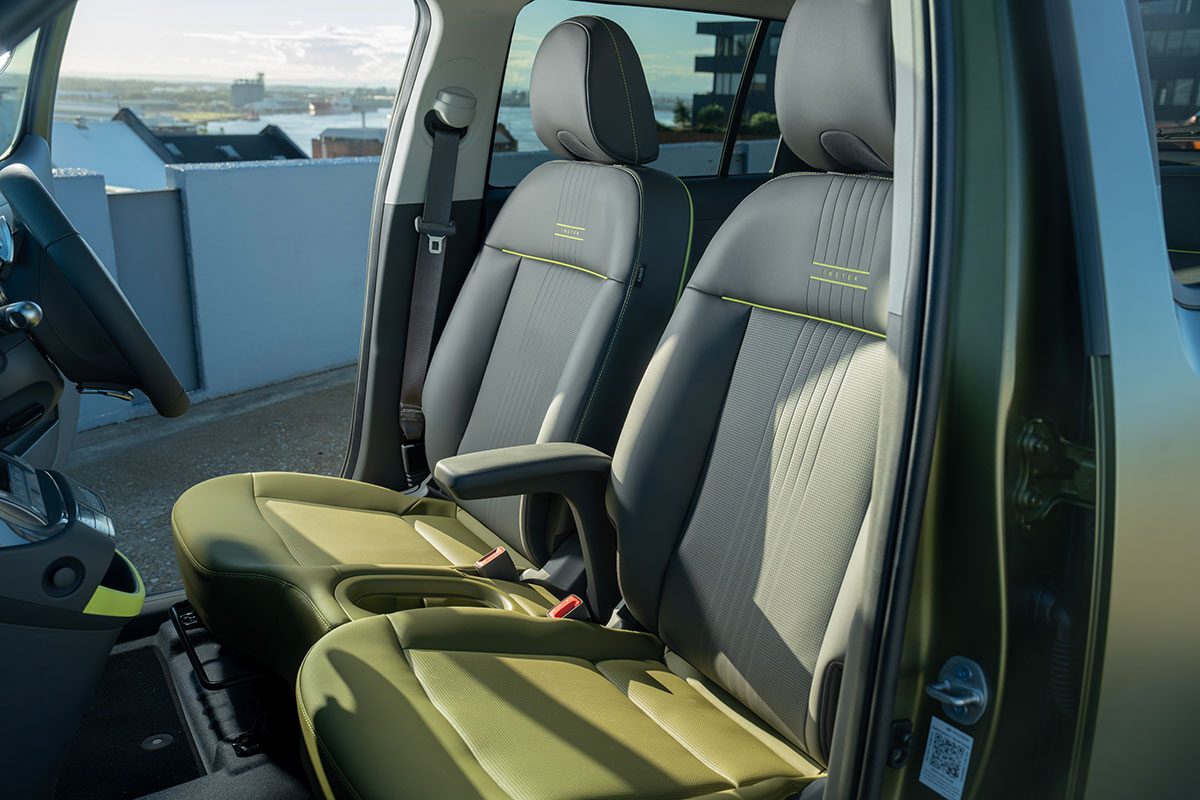
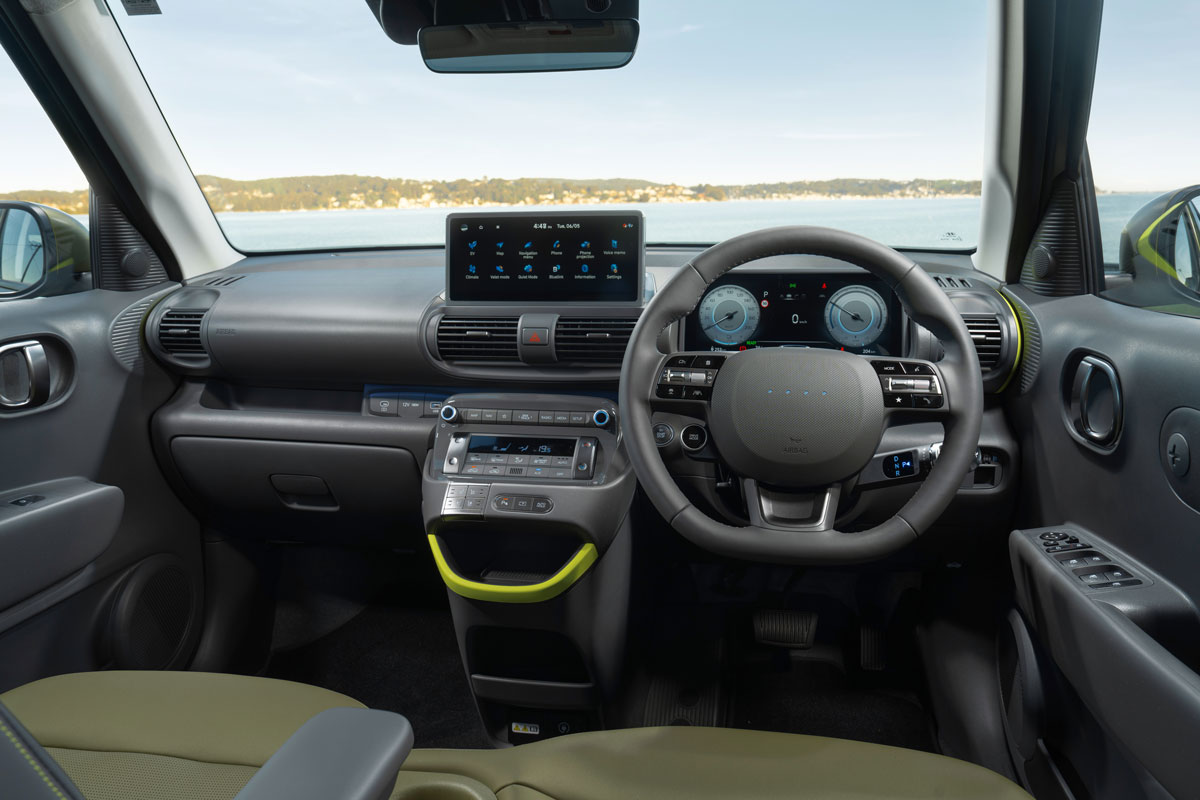
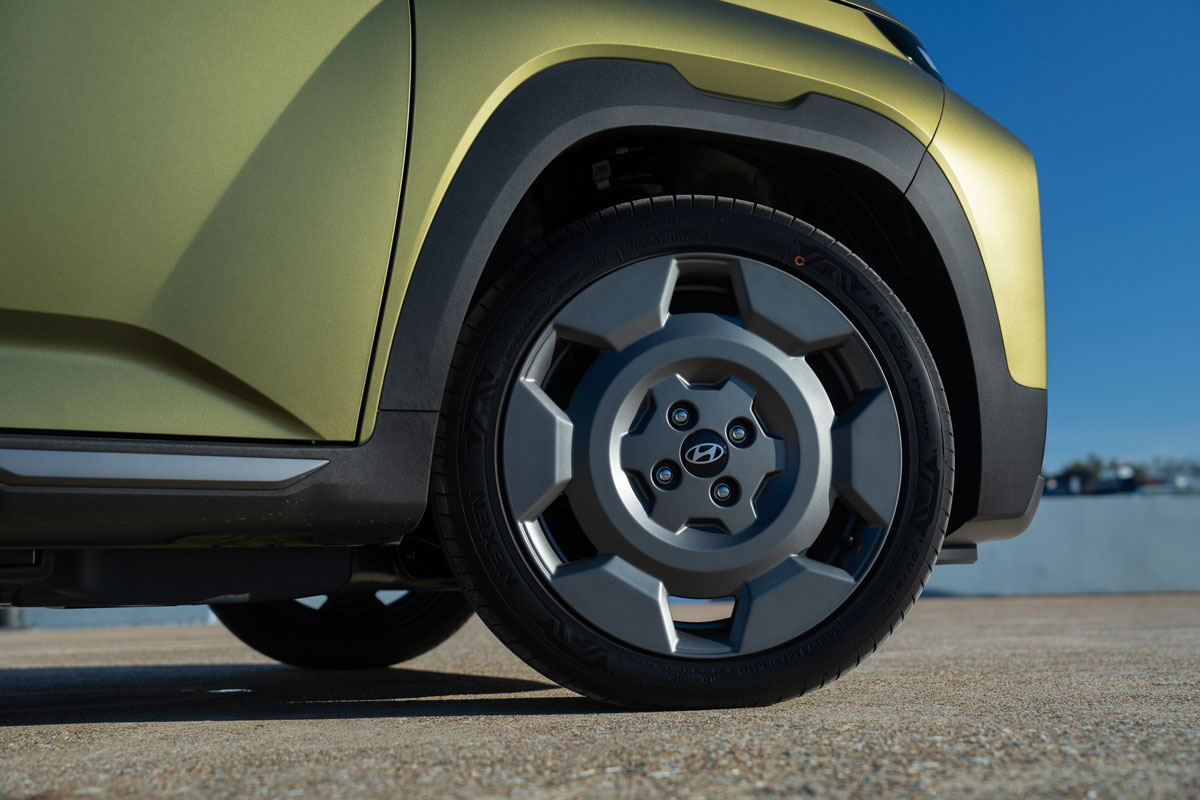
Hyundai has built on the classic runabout brief with the Inster’s on-road execution. It’s fun, it’s approachable, and it feels civilised and polished in just about every scenario.
The installation of an electric drivetrain means the Inster avoids the buzz-box tendencies of a petrol-powered equivalent. Instead, acceleration is effortless, the cabin acoustics are hushed, and the car builds speed progressively to highway velocity.
About the only thing missing for the quintessential runabout experience is a manual transmission, although the ability to adjust regenerative braking on the fly via steering wheel mounted paddles does offer a very pale imitation of involvement.
Moreover, the vehicle’s 1300kg kerb weight and nippy 10.6-metre turning circle endow it with a real lightness and agility on-road, almost flying in the face of typical EV character traits.
The outlook is open and airy, and the key controls offer consistently good modulation, a trait which means the Inster is easy to become acquainted with.
Bump absorption is quite commendable on a car measuring only 3.8 metres, something that once again stems from its lengthy wheelbase. Smaller pitter-patter bumps are easily dispatched while larger undulations are reflected in the chassis accordingly, with no obvious crashing.
The Inster holds its own on faster roads, with accurate steering and faithful levels of body control in tighter corners and faster, undulating corners alike.
The base Standard Range is our pick for the road, its thicker-walled tyres offering an added layer of comfort above the Extended Range and Inster Cross.
Ultimately, the car’s tiny footprint isn’t infallible. During highway passage the drivetrain can feel languid on bigger hills, and energy consumption will climb quite steadily if you’re regularly above 100km/h. For reference, we managed 10.7kWh/100km in a mix of conditions but saw closer to 20kWh/100km on a highway run.
All told, the Inster’s fun and playful design transcends the driving experience. It offers a level of polish rarely seen on cheaper Chinese equivalents, and it feels airy and cheerful on-road. You could easily imagine yourself covering the cobblestone roads of Paris in one.
In many respects, the Inster poses as the perfect modern-day runabout: nippy, fun and cheerful – at the same time avoiding the buzz-box tendencies of a cheap petrol-powered equivalents.
The big sticking point here is the price, which is so lofty the Inster will effectively be available to a select few. Those customers will no doubt find joy in its driving characteristics and inherent polish.
The old adage that ‘you get what you pay for’ rings true when comparing the Inster to cheaper Chinese rivals. If Hyundai could offer the Inster entry price at closer to $30,000 drive away, it would have nailed the modern runabout brief.